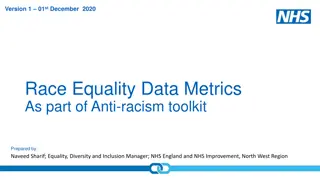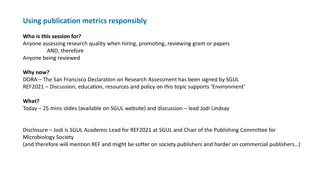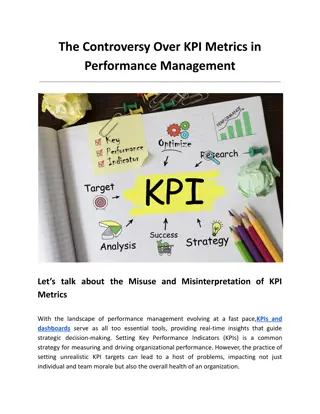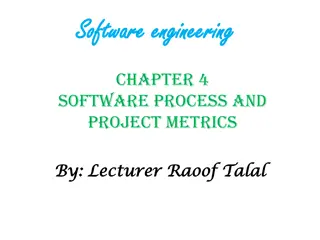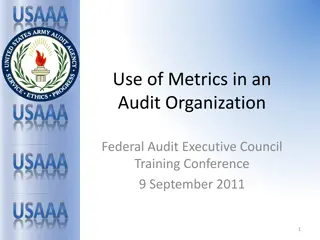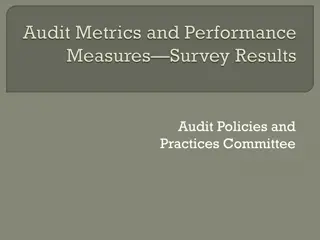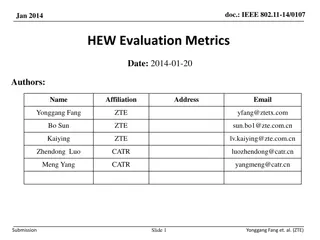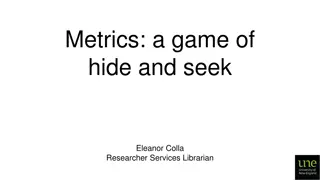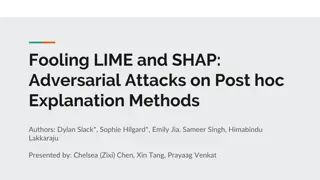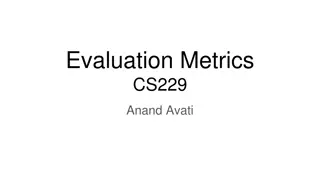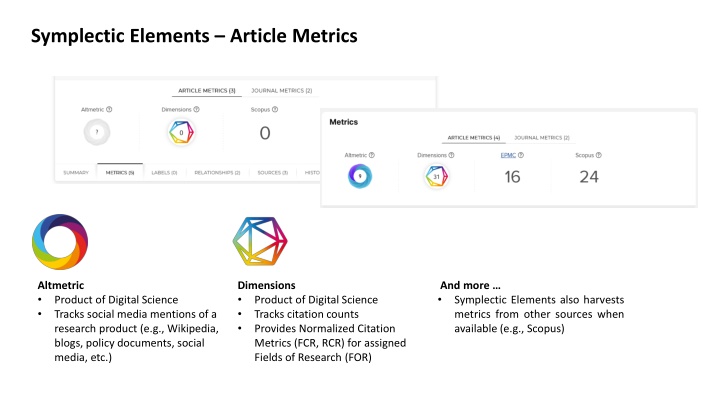
Metrics and Impact Analysis for Scholarly Works
Explore the comprehensive metrics provided by Symplectic Elements for scholarly works, including Altmetric product tracking social media mentions, journal metrics like SNIP and SJR, and author metrics such as h-index. Understand the uses and limitations of these metrics in evaluating the impact of research products. Learn how these metrics can help gauge the specific impact of your work independent of journal prestige. Click to delve deeper into understanding and utilizing scholarly metrics effectively.
Download Presentation

Please find below an Image/Link to download the presentation.
The content on the website is provided AS IS for your information and personal use only. It may not be sold, licensed, or shared on other websites without obtaining consent from the author. If you encounter any issues during the download, it is possible that the publisher has removed the file from their server.
You are allowed to download the files provided on this website for personal or commercial use, subject to the condition that they are used lawfully. All files are the property of their respective owners.
The content on the website is provided AS IS for your information and personal use only. It may not be sold, licensed, or shared on other websites without obtaining consent from the author.
E N D
Presentation Transcript
Symplectic Elements Article Metrics Altmetric Product of Digital Science Tracks social media mentions of a research product (e.g., Wikipedia, blogs, policy documents, social media, etc.) Dimensions Product of Digital Science Tracks citation counts Provides Normalized Citation Metrics (FCR, RCR) for assigned Fields of Research (FOR) And more Symplectic Elements also harvests metrics from other sources when available (e.g., Scopus)
Symplectic Elements Journal Metrics SNIP SJR Source Normalized Impact per Paper (SNIP): the number of citations given in the journal's present year to publications in the past three years divided by the total number of publications in the past three years adjusted to the citation norms of the journal's discipline. SCImago Journal Rank (SJR): a measure of journal influence in a subject category based on citations received (as tracked by Scopus) and the influence of the source of those citations. It is based on the Google PageRank algorithm.
Symplectic Elements Author Metrics* h-index calculated by counting the number of publications for which an author has been cited at least that same number of times for example, in the example to the left, an h-index of 5 means that 5 of the author s articles have been cited at least 5 times * Not recommended; the metric behaves unpredictably and tends to reflect length of career more than anything else. For example, a person with a few highly influential works would look no more significant than a person with several modestly cited works.
Uses Limitations A starting place to collect metrics about your scholarly works Not all publications are tracked by citation databases (e.g. Scopus, Dimensions, etc.) Altmetric provides links to mentions of your work that may demonstrate broader social impact (news coverage, policy works, etc.) It takes time for a work to be cited Citation counts vary depending on the source used. Dimensions is larger that most databases, but Google Scholar will often report a higher citation count. Dimensions includes several useful citation-based metrics about your work: o Total citations per work o Field Citation Ratio (FCR): a normalized citation metric that enables comparison of how your work is cited with other works published in that year and in the same field o Relative Citation Ratio (RCR): similar to FCR, but limited to articles funded by the NIH o These metrics can demonstrate the specific impact of your work independent of perceived journal prestige The mentions reported by Altmetric are more meaningful that the calculated Altmetric Attention score. Similar to the Journal Impact Factor (JIF), SJR and SNIP are journal-level metrics. These speak to the relative influence of the journal and may not reflect the value of your article. Learn more: https://researchmetrics.indianapolis.iu.edu/resou rces.html





